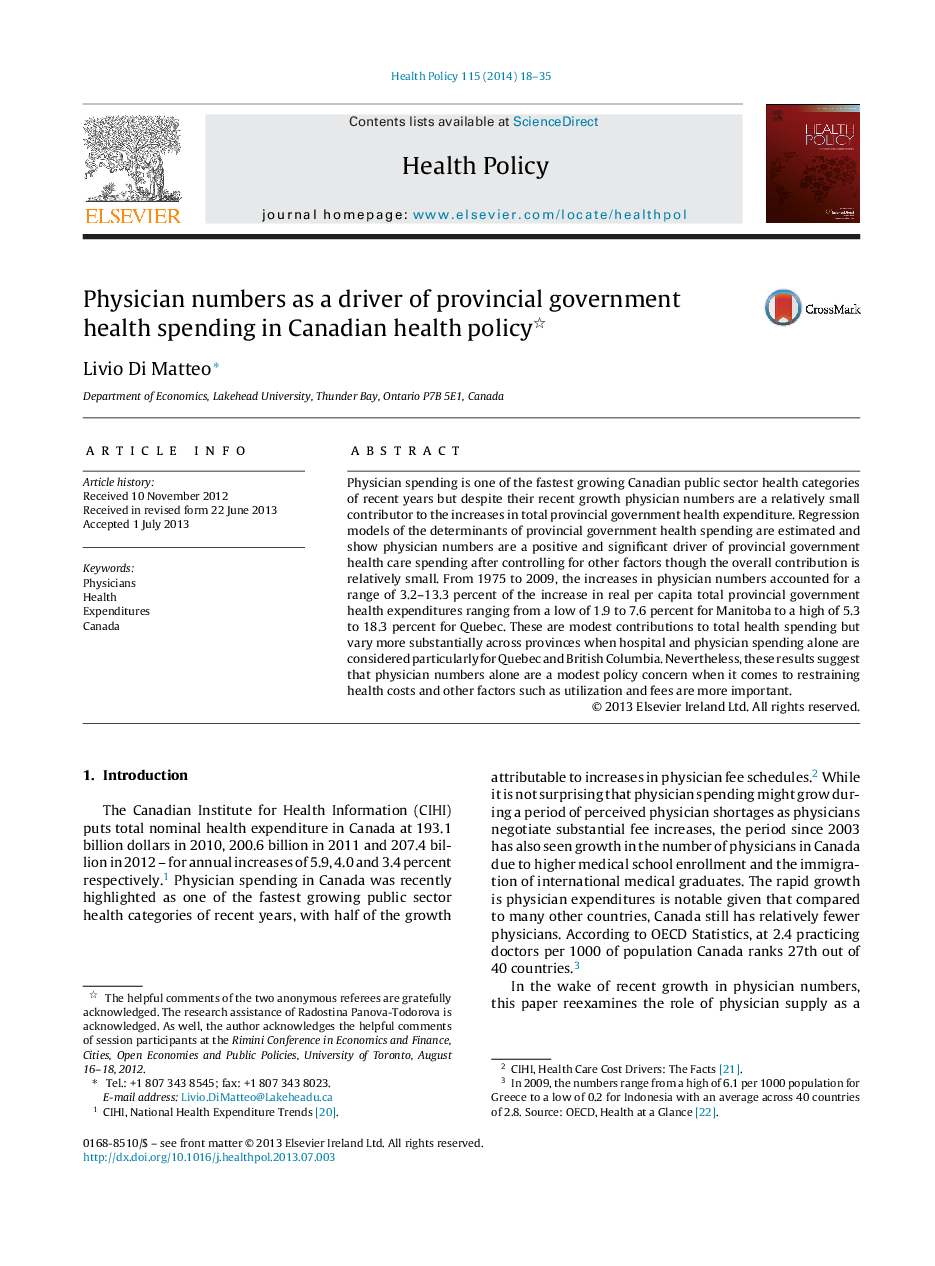| Article ID | Journal | Published Year | Pages | File Type |
|---|---|---|---|---|
| 6239643 | Health Policy | 2014 | 18 Pages |
Abstract
Physician spending is one of the fastest growing Canadian public sector health categories of recent years but despite their recent growth physician numbers are a relatively small contributor to the increases in total provincial government health expenditure. Regression models of the determinants of provincial government health spending are estimated and show physician numbers are a positive and significant driver of provincial government health care spending after controlling for other factors though the overall contribution is relatively small. From 1975 to 2009, the increases in physician numbers accounted for a range of 3.2-13.3 percent of the increase in real per capita total provincial government health expenditures ranging from a low of 1.9 to 7.6 percent for Manitoba to a high of 5.3 to 18.3 percent for Quebec. These are modest contributions to total health spending but vary more substantially across provinces when hospital and physician spending alone are considered particularly for Quebec and British Columbia. Nevertheless, these results suggest that physician numbers alone are a modest policy concern when it comes to restraining health costs and other factors such as utilization and fees are more important.
Keywords
Related Topics
Health Sciences
Medicine and Dentistry
Public Health and Health Policy
Authors
Livio Di Matteo,
